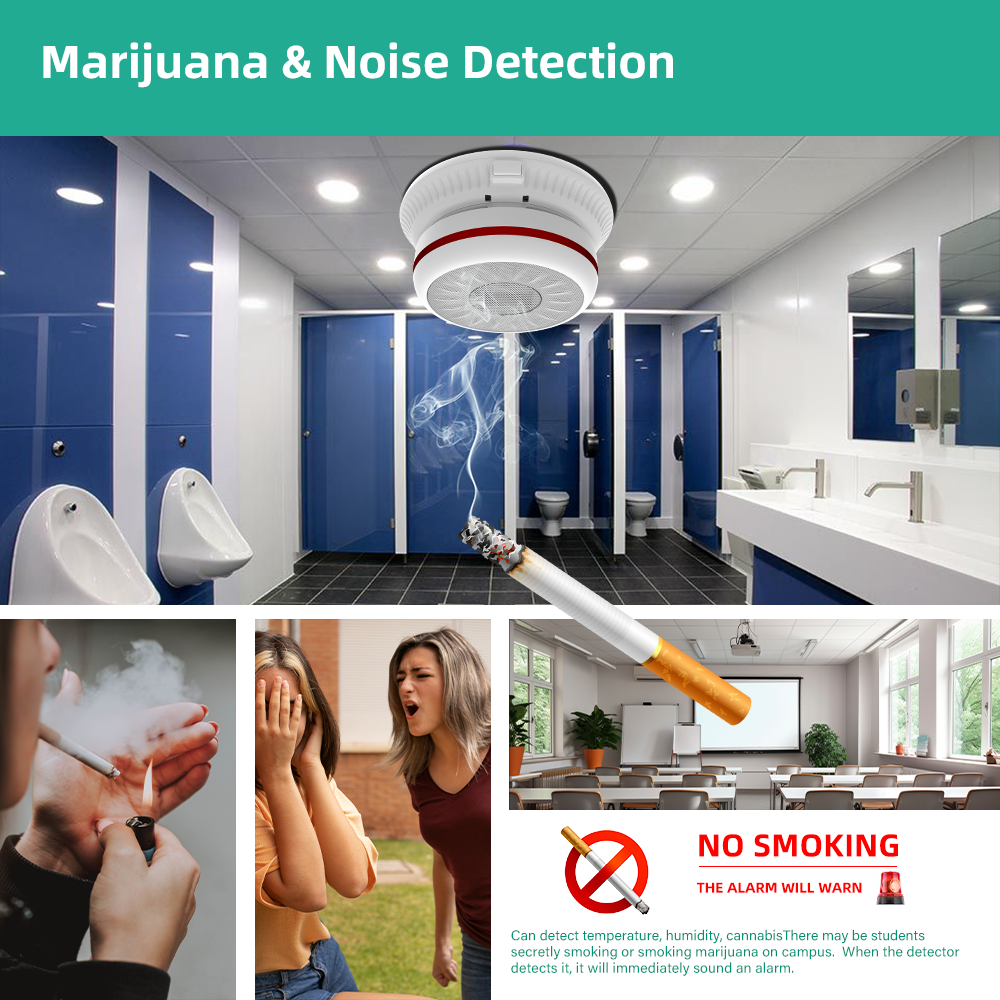Every three minutes in American schools, there’s an under-reported epidemic that involves student who vapes. Experts in public health consider teenage vaping a full-blown crisis as well, with the CDC noting that 40% of high school students and 20 percent of middle schoolers have had a go at electronic cigarettes. Nearly all of these devices (99%) have nicotine in them, a chemical that is addictive which alters the wiring of the brain and is frequently used to facilitate cigarette smoking. Teachers, parents, and administrators are increasingly under pressure to make a difference. Enter the vape detector, a sophisticated tool rapidly becoming a must-have on campuses all over the world. Among the leaders, Triton and 3D Sense stand out as vape detectors for schools which do more than simply sound an alarm.
How Vape Detectors perform: Accuracy without intrusion
A modern vape smoke detector like the Triton UTRA Smart Safety Sensor does not rely on audio recordings or cameras, ensuring the highest level of privacy and providing actionable intelligence. The device uses advanced particulate sensor technology to analyze the air in real time. When vape aerosols (like heavy perfumes) smoke from cigarettes, marijuana vapors appear it will send an instant alert via text message or email to the designated staff members. False positives are very low making administrators confident that every alert needs immediate attention.

The cost of deployment is reduced when one device covers the entire room. In the first five weeks after installation, Triton customers typically report significant reductions in vaping incidents. Why is that? Data-driven deterrence. The Triton Cloud Dashboard reveals “hotspots” where vaping happens the most often and at what moments, allowing authorities to redirect hall monitors and security personnel precisely to the areas they’re required.
Beyond Detection: Occupancy Visualization and Loitering Control
What sets Triton apart from basic vape detectors is its patent-pending occupancy visualization technology. The ULTRA sensor does not require images or sound to monitor dwell time or people count in areas that are sensitive. Administrators see color-coded heat maps showing the times when bathrooms are transformed into social hubs, which are the most popular locations to smoke and also the long-term close contact that can spread respiratory illnesses.
Stanford Medicine research emphasizes the dangers. Students who use vapes are 5 times more likely than others to contract COVID-19. By reducing congregating smoking, vape detectors in schools directly improve air quality and reduce the risk of transmission for the airborne pathogens. Following the pandemic, this benefits have elevated these devices from optional to mandatory.
Transforming Data into Discipline and Dialogue
The numbers tell a fascinating story. The Triton reports module compiles qualitative evidence about incident timestamps, areas, frequency trends that schools provide to schools, parents groups even students. Skepticism is reduced when campuses show 60% fewer detections after detector installation. Parents can sense the dedication, and students understand the implications.
Teachers can create a more powerful impression by introducing vape detectors on the first day. 3D Sense, for example is advertised as an anti-smoking device. Guideline materials advise that students are aware of the fact that air is always watching. Peer accountability follows: the social cost of initiating an alert usually is more effective than any instruction.
A Multi-Front Strategy Schools Can’t Ignore
Vape detectors are not the only tool that can end vaping. They are a part of a complete strategy.
Alerts in real-time identify instances that are currently in progress.
Education – Research based on evidence-based practices fuels curricula that discourage smoking.
Deterrence – Signage that is visible and other known consequences alter behavior.
Discipline – Hotspot data justifies targeted enforcement.
Support – Schools provide resources for struggling students to stop smoking.
The CDC emphasizes that reversing this trend requires “buy-in” from educators, parents and society. Vape detectors are an important missing piece of the puzzle – an immediate, objective feedback system that transforms good intentions into tangible outcomes.
Deployment made Simple
It takes just a few minutes to register devices on the Triton Cloud Dashboard. Administrators are able to customize the rules for notification and also add contacts. A single demo reveals how simple the interface is. You can schedule a demo to view live hotspot maps and historic graphs in real time.
Conclusion
Every puff that is ignored could result in addiction for a lifetime. Every bathroom activity that is not spotted poses a risk to both your health and safety. Vape detectors at schools like Triton and 3D Sense offer more than surveillance. They offer information, security, and evidence of advancement. Campuses who install them aren’t merely reacting to the rising vaping menace They are taking back control.
These devices transform nebulous fears into real victories. With just one sensor for each room, and a privacy-safe occupancy insight the tools can change vague fears into tangible ones. In a time where 40% of high schoolers have already experimented and middle-school figures are growing each day, waiting is no longer a viable option. You’ll be the first person to learn what the atmosphere in your school is proclaiming.
